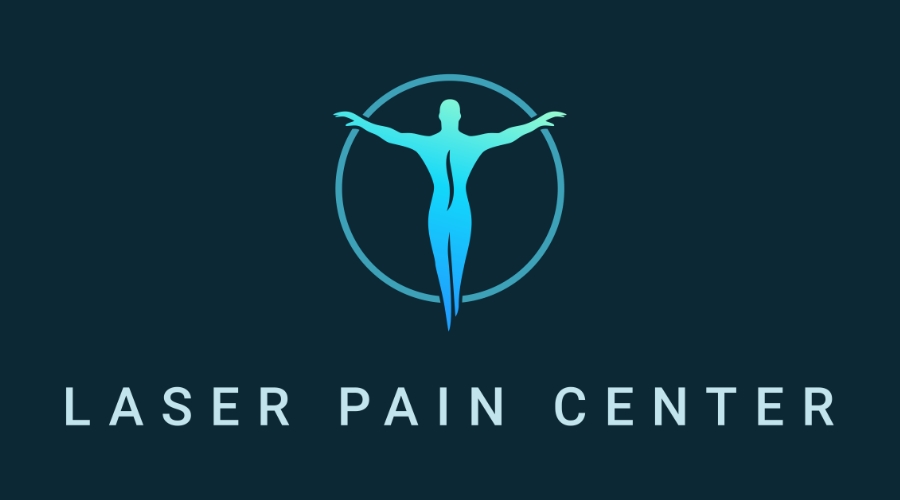Peripheral neuropathy, a condition that affects the nerves outside the brain and spinal cord, can cause pain, weakness, numbness, and other debilitating symptoms. Managing this condition requires a tailored approach to address the underlying causes and provide effective relief. If you’re searching for ways to manage the pain and improve your quality of life, this guide will explore six proven treatment options for peripheral neuropathy, helping you understand what might work best for you.
1. Medications for Symptom Control
Medications are often the first line of defense for managing peripheral neuropathy. Over-the-counter options like acetaminophen or ibuprofen can provide temporary relief for mild pain. For more severe cases, prescription medications are available, such as:
•Antidepressants: Certain antidepressants, like amitriptyline or duloxetine, are effective in managing chronic pain by altering how the brain perceives pain signals.
•Anticonvulsants: Drugs like gabapentin and pregabalin are commonly prescribed to treat nerve pain associated with peripheral neuropathy.
•Topical treatments: Creams or patches containing capsaicin or lidocaine can be applied directly to the skin to reduce localized pain.
While medications can offer relief, they may not address the root cause of the condition. It’s crucial to use them under a doctor’s supervision to avoid potential side effects or interactions.
2. Lifestyle Changes for Long-Term Relief
Adopting healthier habits can significantly impact the progression and symptoms of peripheral neuropathy. Lifestyle modifications that support nerve health include:
•Balanced diet: Consuming foods rich in vitamins B12, B6, and E can help maintain nerve function. Foods like leafy greens, nuts, and lean proteins are excellent choices.
•Regular exercise: Activities such as walking, swimming, or yoga improve circulation and reduce inflammation, which may alleviate symptoms like numbness and tingling.
•Quitting smoking: Smoking reduces blood flow to the nerves, exacerbating damage. Quitting can improve nerve health and overall pain management.
These changes not only complement other treatments but also enhance your overall well-being, making them a cornerstone of pain relief management.
3. Physical Therapy for Strength and Mobility
Physical therapy can play a vital role in managing peripheral neuropathy. A physical therapist can develop a personalized exercise program to:
•Increase muscle strength and flexibility.
•Improve balance and coordination, reducing the risk of falls.
•Enhance blood flow to affected areas, promoting healing and nerve repair.
Physical therapy is particularly beneficial for individuals experiencing mobility issues due to nerve damage. Regular sessions can lead to significant improvements in function and a reduction in pain levels.
4. Advanced Pain Management Techniques
For individuals seeking innovative solutions, advanced pain management techniques can offer relief when traditional methods fall short. These include:
•Transcutaneous Electrical Nerve Stimulation (TENS): TENS therapy involves using low-voltage electrical currents to disrupt pain signals. Small electrodes placed on the skin near the affected area can provide temporary relief from nerve pain.
•Laser therapy: Low-level laser therapy is a non-invasive treatment that uses light energy to stimulate cellular repair and reduce inflammation. This approach has shown promise in alleviating pain and improving nerve function for peripheral neuropathy patients.
•Nerve blocks: In severe cases, injections of anesthetic or anti-inflammatory agents near the affected nerves can provide targeted pain relief.
These techniques often require specialized equipment and professional oversight, making it essential to consult with a qualified pain doctor to determine the best approach for your condition.
5. Complementary and Alternative Therapies
Complementary therapies can enhance traditional treatments for peripheral neuropathy, offering additional avenues for pain relief management. Popular options include:
•Acupuncture: This ancient practice involves inserting thin needles into specific points on the body to stimulate healing and reduce pain. Many patients report significant improvements after regular sessions.
•Massage therapy: Gentle massage can alleviate muscle tension, improve circulation, and promote relaxation, helping to reduce neuropathy symptoms.
•Supplements: Certain supplements, such as alpha-lipoic acid or evening primrose oil, have been studied for their potential to reduce nerve pain and inflammation. Always consult your doctor before adding supplements to your regimen.
While these therapies may not replace medical treatments, they can provide valuable support in managing the pain and discomfort associated with peripheral neuropathy.
6. Treating the Underlying Cause
Peripheral neuropathy often results from an underlying condition, such as diabetes, autoimmune diseases, or infections. Addressing the root cause is critical for long-term relief. For instance:
•Diabetic neuropathy: Maintaining stable blood sugar levels through diet, exercise, and medication can prevent further nerve damage and alleviate symptoms.
•Autoimmune conditions: Medications like immunosuppressants or corticosteroids may be prescribed to reduce inflammation and protect nerves.
•Vitamin deficiencies: Supplementing with the appropriate vitamins can reverse nerve damage caused by deficiencies.
By focusing on the underlying cause, you can effectively manage the pain and prevent the progression of peripheral neuropathy.
Choosing the Right Approach for You
Peripheral neuropathy requires a comprehensive and personalized treatment plan. Whether you’re considering medications, lifestyle changes, or advanced pain management techniques, consulting with a knowledgeable pain doctor is essential. A skilled professional can guide you through the available options and develop a strategy tailored to your needs.
At Laser Pain Center, we specialize in innovative treatments for chronic pain and nerve-related conditions. Our team is dedicated to helping you find effective solutions, from laser therapy to lifestyle counseling. Contact us today to take the first step toward lasting pain relief and improved quality of life.
Follow us on social media!

Request Consultation
Peripheral neuropathy, a condition that affects the nerves outside the brain and spinal cord, can cause pain, weakness, numbness, and other debilitating symptoms. Managing this condition requires a tailored approach to address the underlying causes and provide effective relief. If you’re searching for ways to manage the pain and improve your quality of life, this guide will explore six proven treatment options for peripheral neuropathy, helping you understand what might work best for you.
1. Medications for Symptom Control
Medications are often the first line of defense for managing peripheral neuropathy. Over-the-counter options like acetaminophen or ibuprofen can provide temporary relief for mild pain. For more severe cases, prescription medications are available, such as:
•Antidepressants: Certain antidepressants, like amitriptyline or duloxetine, are effective in managing chronic pain by altering how the brain perceives pain signals.
•Anticonvulsants: Drugs like gabapentin and pregabalin are commonly prescribed to treat nerve pain associated with peripheral neuropathy.
•Topical treatments: Creams or patches containing capsaicin or lidocaine can be applied directly to the skin to reduce localized pain.
While medications can offer relief, they may not address the root cause of the condition. It’s crucial to use them under a doctor’s supervision to avoid potential side effects or interactions.
2. Lifestyle Changes for Long-Term Relief
Adopting healthier habits can significantly impact the progression and symptoms of peripheral neuropathy. Lifestyle modifications that support nerve health include:
•Balanced diet: Consuming foods rich in vitamins B12, B6, and E can help maintain nerve function. Foods like leafy greens, nuts, and lean proteins are excellent choices.
•Regular exercise: Activities such as walking, swimming, or yoga improve circulation and reduce inflammation, which may alleviate symptoms like numbness and tingling.
•Quitting smoking: Smoking reduces blood flow to the nerves, exacerbating damage. Quitting can improve nerve health and overall pain management.
These changes not only complement other treatments but also enhance your overall well-being, making them a cornerstone of pain relief management.
3. Physical Therapy for Strength and Mobility
Physical therapy can play a vital role in managing peripheral neuropathy. A physical therapist can develop a personalized exercise program to:
•Increase muscle strength and flexibility.
•Improve balance and coordination, reducing the risk of falls.
•Enhance blood flow to affected areas, promoting healing and nerve repair.
Physical therapy is particularly beneficial for individuals experiencing mobility issues due to nerve damage. Regular sessions can lead to significant improvements in function and a reduction in pain levels.
4. Advanced Pain Management Techniques
For individuals seeking innovative solutions, advanced pain management techniques can offer relief when traditional methods fall short. These include:
•Transcutaneous Electrical Nerve Stimulation (TENS): TENS therapy involves using low-voltage electrical currents to disrupt pain signals. Small electrodes placed on the skin near the affected area can provide temporary relief from nerve pain.
•Laser therapy: Low-level laser therapy is a non-invasive treatment that uses light energy to stimulate cellular repair and reduce inflammation. This approach has shown promise in alleviating pain and improving nerve function for peripheral neuropathy patients.
•Nerve blocks: In severe cases, injections of anesthetic or anti-inflammatory agents near the affected nerves can provide targeted pain relief.
These techniques often require specialized equipment and professional oversight, making it essential to consult with a qualified pain doctor to determine the best approach for your condition.
5. Complementary and Alternative Therapies
Complementary therapies can enhance traditional treatments for peripheral neuropathy, offering additional avenues for pain relief management. Popular options include:
•Acupuncture: This ancient practice involves inserting thin needles into specific points on the body to stimulate healing and reduce pain. Many patients report significant improvements after regular sessions.
•Massage therapy: Gentle massage can alleviate muscle tension, improve circulation, and promote relaxation, helping to reduce neuropathy symptoms.
•Supplements: Certain supplements, such as alpha-lipoic acid or evening primrose oil, have been studied for their potential to reduce nerve pain and inflammation. Always consult your doctor before adding supplements to your regimen.
While these therapies may not replace medical treatments, they can provide valuable support in managing the pain and discomfort associated with peripheral neuropathy.
6. Treating the Underlying Cause
Peripheral neuropathy often results from an underlying condition, such as diabetes, autoimmune diseases, or infections. Addressing the root cause is critical for long-term relief. For instance:
•Diabetic neuropathy: Maintaining stable blood sugar levels through diet, exercise, and medication can prevent further nerve damage and alleviate symptoms.
•Autoimmune conditions: Medications like immunosuppressants or corticosteroids may be prescribed to reduce inflammation and protect nerves.
•Vitamin deficiencies: Supplementing with the appropriate vitamins can reverse nerve damage caused by deficiencies.
By focusing on the underlying cause, you can effectively manage the pain and prevent the progression of peripheral neuropathy.
Choosing the Right Approach for You
Peripheral neuropathy requires a comprehensive and personalized treatment plan. Whether you’re considering medications, lifestyle changes, or advanced pain management techniques, consulting with a knowledgeable pain doctor is essential. A skilled professional can guide you through the available options and develop a strategy tailored to your needs.
At Laser Pain Center, we specialize in innovative treatments for chronic pain and nerve-related conditions. Our team is dedicated to helping you find effective solutions, from laser therapy to lifestyle counseling. Contact us today to take the first step toward lasting pain relief and improved quality of life.


